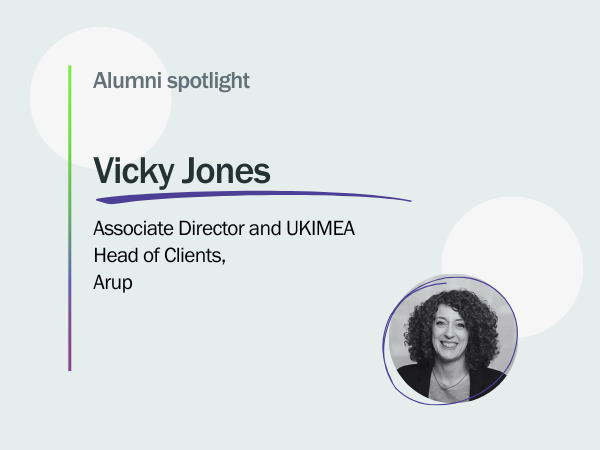Sharing research, insights, trends and advice to help you keep up with the latest in ABM
Hello everyone,
Welcome to the sixth edition of The ABM-er, a newsletter set up to share research, insights, trends, and advice to help you keep up with the evolution of ABM best practices.
This month, I’m looking at the customer perspective for ABM, drawing on the third chapter in my book, Account-Based Marketing: The definitive handbook for B2B marketers.
In this edition, we’ll look at how our customers’ world is changing before we hear from an experienced buyer of technology solutions. Charles Forte has spent over four decades selecting and working with suppliers in both private and public sector organisations, and he shares his perspectives on how buying is different between these two sectors and what customers now expect.
Finally, we hear from Fiona Czerniawska, the Founder and CEO of Source Global Research, who gives us insights into the way buyers select professional services and consulting firms, and how this varies by sector and around the world.
If you want to be a successful ABM-er, you need to understand and act on this level of insight into the customer perspective — both at a general market level and one customer at a time!
I hope you find this month’s edition valuable. Do let me know if you have any comments or questions!
And if you enjoy it, please subscribe to receive future editions: https://bit.ly/43FJ3Cb
Many thanks,
Bev.
How is our customers’ world changing?
Our world is changing. Environmental factors, economic uncertainty, political volatility, and the potential impact of AI are unsettling at best. For our customers, they are factors that make the job of building sustainable value for their customers, employees, shareholders and wider society much harder.
How is B2B buying changing as a result? In my research for the new book, I found these five main considerations:
- An appetite for change. Customers are shaking up who they choose to work with, looking for innovation and believing that it won’t come from their existing suppliers.
- Collaborating to do more with less. As many technology buyers face budget increases only just above projected rates of inflation they are looking for ways to collaborate and effectively co-deliver digital programmes.
- Greater rigour in the buying process. Buying teams are bigger and involve more C-suite executives, plus they’re researching and screening potential partners before inviting them to pitch.
- A preference for demonstrable expertise. Customers want to see evidence of where you have made a difference — and where your expertise is coming from.
- Diverse supplier ecosystems. Procurement teams are moving towards socially responsible practices and increasing the diversity of their suppliers.
These five things are reinforced by the perspectives from Charles Forte and Fiona Czerniawska below, both extracts from their full interviews in my book.
Buying technology solutions: Perspectives from Charles Forte, DG CIO, UK MoD
How have you seen the buying process and supplier management process evolve over your career?
The biggest change has been the need to connect to smaller, more innovative companies: not just start-ups but smaller and medium sized organisations who, I would argue, are now a much bigger source of innovative skills and leading-edge capability in the marketplace that we need to find a way to access. Increasing the understanding of the corporate or government sector of what the real world looks like to a medium-sized or small enterprise trying to do business with us is getting much more critical.
That change in the market also means there’s a much bigger challenge for us internally and with our partners to drive integration. How do you access and integrate a larger number of smaller organisations in the face of more variety and faster cycles in a way that enhances, not destroys, cohesion?
What are the main differences between buying for private and public sector organisations?
In a large commercial organisation, there is always bureaucracy and things that need to be handled, but you have an easier route to being able to make an argument that says, ‘I just need to do this and I’m doing it now’. Yes, you need to be thoughtful about your risk management around that decision. But in a government context, like all large-scale bureaucracies, they haven’t grown up to big, large-scale bureaucracies because they’re stupid. they’ve grown up with processes that are there to satisfy legitimate taxpayer concerns.
One other point I want to make is in terms of the wider process. It is a lot easier in a commercial organisation to recognise and deal with the characteristics of modern digital buying which are about being innovative, starting small, scaling up, moving on. Government purchasing, particularly in the big organisations, is set up for more engineering-type outcomes. They are not designed around the needs of the modern data-led, software-defined world. These purchasing processes can get too focused on defining every single requirement over a seven-year period in a digital context — which is hard to do. The process forces you to be risk averse, starting with the outcome you want and then deciding how to put the requirements together to get that. Yes, you have to be careful of taxpayers’ money in arriving at the outcome, but that sort of approach doesn’t even work in engineering anymore. It ignores innovation and scale up.
How do you see the way that organisations buy from and manage relationships with strategic suppliers evolving in the next five years?
I believe that a lot of the core tenets won’t change. It will be about relationships, and the relationships being used to drive connections to technology opportunities that I wouldn’t otherwise know are there, driven by their understanding of my contextual need. People that leave me to join the dots are going to be less successful than those doing a fair amount of work to help me join the dots.
What will change will be driven by the need for cohesion, by being connected in the way we work; by a focus on integration, where what shows up by default has a good chance of being joined up; and, finally, the sheer pace of the modern digital world. These factors will drive how the conversation and the connections from suppliers have to develop. Some of that will happen by improving already successful ways of engaging and working, and some of it will require a different mindset and a different way of approaching things.
Have you ever been aware of the fact that you’re being targeted with very personalised communications, such as through account-based marketing?
That happens all the time. At £4.6 billion we are overseeing one of Western Europe’s biggest single IT spends so of course we are going to be a target. We have to be very selective. I don’t have an effective scientific method of dealing with it, to be honest. It tends to be opportunity-driven, diary-driven, and relationship-driven. I do have to put a lot of time and effort into being aware of what’s going on in the world and part of that is about going out to visit people and be educated. But dealing with the volume of communications I receive, and working out where the hidden gems might be, is hard. I have now built up a community of people I want to have relationships with, because it’s in my interests to be connected when the opportunity is right.
Buying professional services: Observations from Fiona Czerniawska
You have been tracking the way that clients buy professional services and consulting for seventeen years now. What are the biggest changes that you’ve seen in that time?
The most obvious one is about the role of procurement. Twenty years ago, procurement played very little role in buying professional services and where they were, it was more at the commodity end of the market. There has been a gradual shift over that time to them becoming more involved in the process, to a point where clients will now tell us that the biggest disincentive to using a firm is that they are not on the preferred supplier list. Procurement really has established a very strong position, partly through the work they’ve done but partly through other factors such as economic circumstances and the setting of rules and regulations.
There is a lot of uncertainty in the world right now. How do you see this impacting demand for professional services and consulting?
The first thing to say is that our data suggests that about 85% of clients say that their business confidence has been compromised by the environment, and a similar proportion say that their ability to invest as a result has been damaged. There is less money to spend and it’s harder to spend it. People have to jump through so many more hoops; procurement being one of them, but only one of them. There is also a lot more pressure to demonstrate what they’re going to get from their purchase. One of the ways in which it’s had an impact is to slow down the buying process.
In your experience how do clients’ priorities and expectations vary across different industry sectors?
Less than you would think. Typically, our research is at the C-suite level, and we find that they are almost like a country or a sector to themselves. They move around in the same fairly rarified world and have remarkably similar opinions about things. And of course they talk to their peers a lot.
That being said, there are clearly some differences. Take financial services, which accounts for between a fifth and a quarter of all professional service work across the world. It has the highest fee rates because it’s got the highest levels of regulation and risk along with expertise and specialist knowledge. Retailing, on the other hand, although a very complex industry, is more accessible, and it’s all about low cost. They’ll use consultants but they don’t want to pay very much for the work and are fairly uncompromising in terms of their treatment of outside services. It’s a transaction essentially.
So, one difference will be based on the level of complexity and specialisation involved. Another, I think, would be around planning cycles. It’s very different selling to an oil company that is planning for the next 30 years than say, a media company. Getting fossil fuels out of the ground or, indeed, replacing them with something else is a very different kind of problem for a consultant than if you are helping a client with a merger in the next six months. So, there’s a short termism versus long termism that probably comes into play there as well.
And do you see any variations in clients’ priorities and expectations around the world?
We do hundreds and hundreds of interviews and a lot of the people that we talk to have worked in many different countries and they take that knowledge, they take what they’ve learnt elsewhere about the firms they’ve used, about what’s worked, and apply it somewhere else. It is extraordinarily interesting how similar it is.
But there are also some differences. I was speaking to somebody in Australia who believed that the only people really spending lots of money on services is the Middle East at the moment. They’ve got money, they’ve got a real need to modernise, and they haven’t got enough people to do it. And a lot of the big organisations there are pretty used to using outside help and will continue to do so.
Or take the US, which is the biggest market by far, accounting for over 40% of all professional services. There are three reasons why it is so big and why it recovers faster from a downturn. The first is the strength of the underlying economy. Use of professional services is very, very tied to economic growth, with a pretty good multiple that says 1% growth in GDP translates into 3 to 4% growth in demand for professional services.
Second, the adoption rates for new technology are faster in the US. And third, there is a willingness to use outside help. They’re much more used to a world in which they bring in outside people. And that’s partly due to employment law as much as it is everything else.
The markets that are less certain at the moment are probably in Asia. India’s been growing very fast, but there are some big question marks about the Chinese consulting market going forwards.




